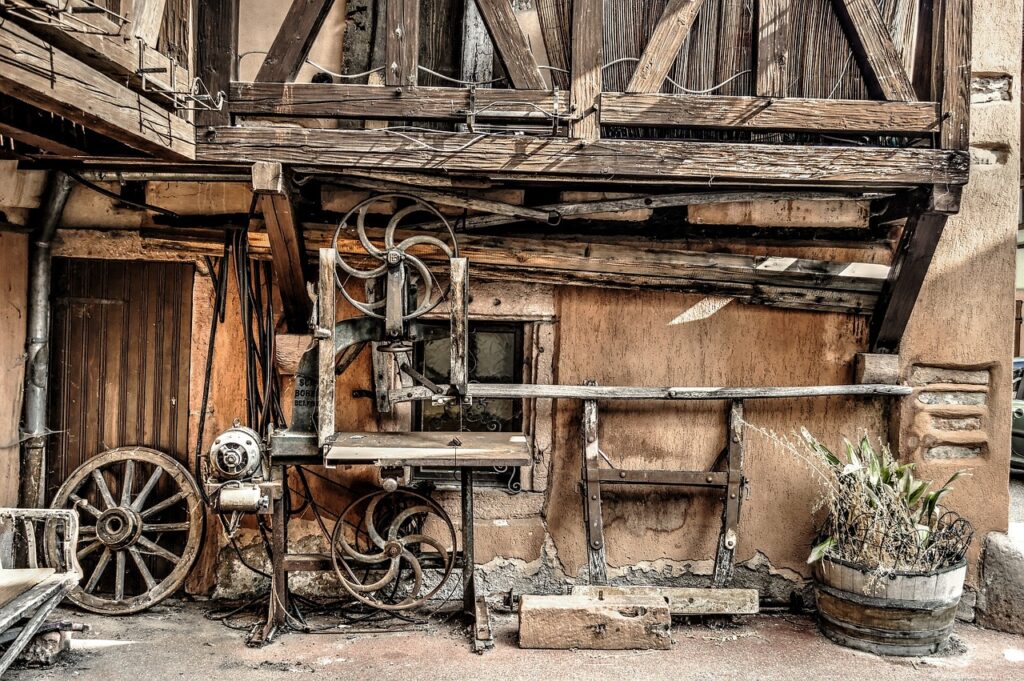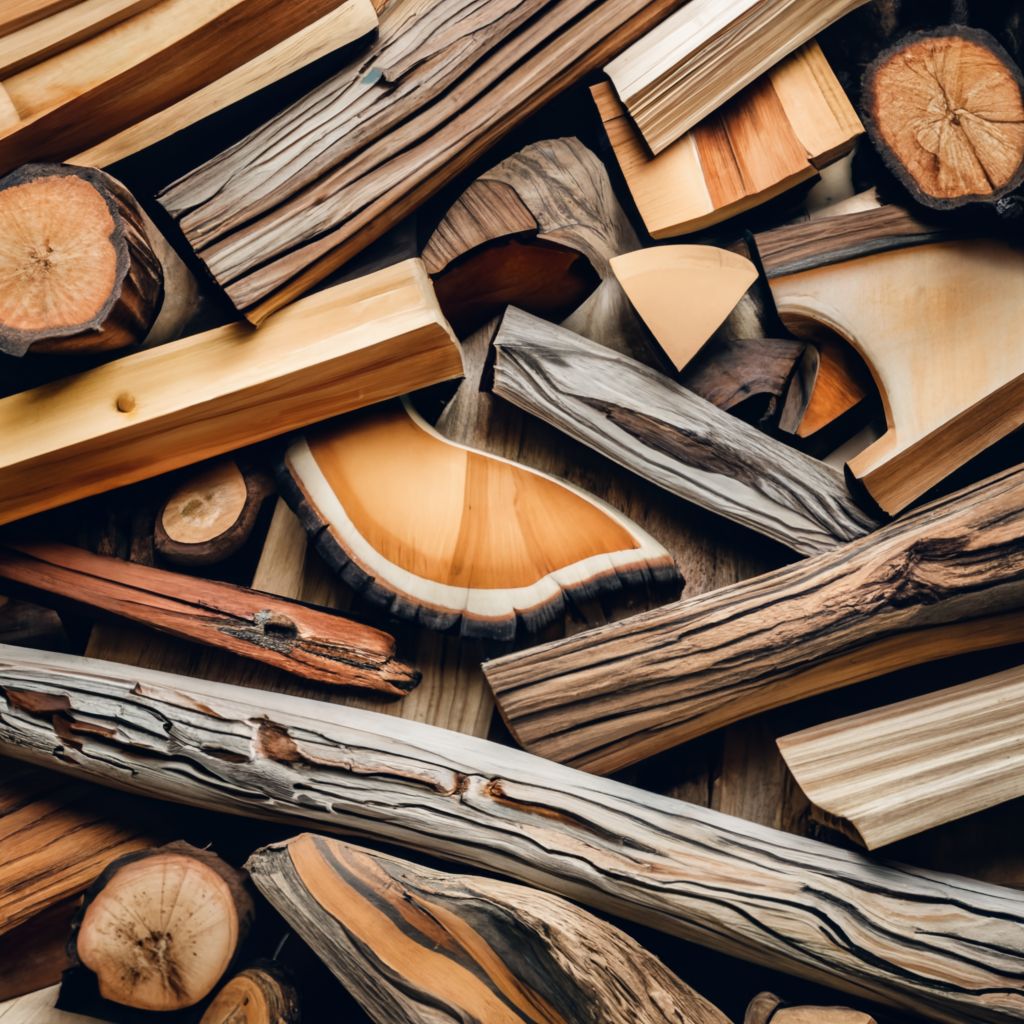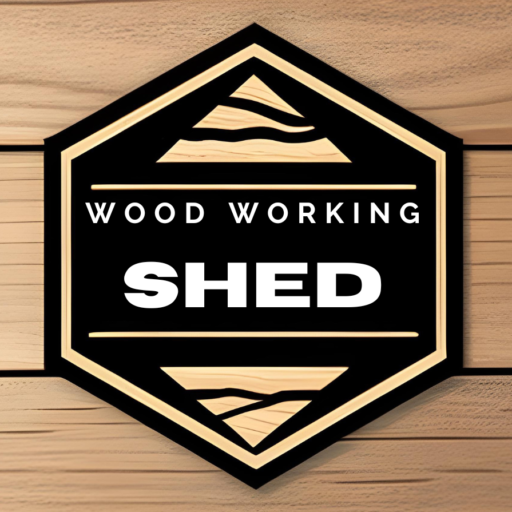Have you ever marveled at the intricate patterns and textures found in wooden furniture and wondered how they came to be? In this article, we will explore the fascinating world of wood grain and delve into the art of understanding its intricate patterns. From the mesmerizing swirls in exotic hardwoods to the straight lines in common pine, we will uncover the secrets behind each grain pattern and discover how it contributes to the beauty and functionality of wooden objects. So, grab a seat and prepare to embark on a journey that will forever change the way you appreciate and understand the art of wood grain.
The Importance of Understanding Wood Grain
Wood grain is a fundamental concept that every woodworker should grasp. It refers to the arrangement of fibers within a piece of wood. By understanding wood grain, you can make informed decisions about woodworking techniques, wood selection, finishing methods, and more. It is crucial to grasp the importance of understanding wood grain to maximize the potential of your woodworking projects and achieve the best possible results.
What is Wood Grain?
Wood grain is the pattern created by the arrangement of fibers in the growth rings of a tree. These fibers are aligned with the vertical axis of the tree, and they vary in density, direction, and appearance. The growth rings in a cross-section of a tree trunk reveal the characteristics of the wood grain.
Why is Understanding Wood Grain Important?
Understanding wood grain is vital for several reasons. First, it helps you identify different wood grain patterns, aiding in the selection of appropriate wood types for specific projects. Second, understanding wood grain allows you to work with the wood’s natural movement, preventing issues such as warping or splitting. Third, it enables you to achieve desired aesthetic effects by working harmoniously with the wood’s inherent features. Overall, understanding wood grain is crucial for successful woodworking projects that are both structurally sound and visually appealing.
Identifying Wood Grain Patterns
Wood grain patterns can vary significantly, depending on the species of wood and the tree’s growth conditions. Here are some common wood grain patterns to be familiar with:
Diffuse-Porous Wood
Diffuse-porous wood, such as maple or poplar, has small and evenly distributed pores throughout the growth rings. The wood grain in diffuse-porous species is typically uniform, making it suitable for woodworking projects that require a consistent appearance.
Ring-Porous Wood
Ring-porous wood, like oak or ash, has large and distinct pores that are concentrated in the earlywood portion of the growth rings. The wood grain in ring-porous species can range from tight and straight to dramatic and pronounced, depending on the tree’s growth conditions.
Semi-Ring-Porous Wood
Semi-ring-porous wood, such as cherry or walnut, exhibits a combination of diffuse-porous and ring-porous characteristics. The wood grain can vary between straight and wavy patterns, offering a unique visual appeal.
Non-Porous Wood
Non-porous wood, such as mahogany or ebony, has very small or almost invisible pores. This wood grain gives the appearance of a smooth and consistent surface, making it highly sought after for its refined aesthetics.
Mixed-Porous Wood
Mixed-porous wood, like birch or beech, displays a mixture of large and small pores throughout the growth rings. The wood grain in mixed-porous species can vary from straight to slightly wavy, providing versatility in woodworking projects.

Types of Wood Grain
Beyond the broad categories of wood grain patterns, there are various specific types of wood grain that offer distinctive visual characteristics. Familiarize yourself with these types to enhance your woodworking projects:
Straight Grain
Straight grain is the most common type of wood grain, featuring fibers that run parallel to each other. This grain pattern is often seen in species like pine and spruce. Straight grain provides a clean and uniform appearance, making it suitable for both classical and contemporary woodworking designs.
Curly Grain
Curly grain, also known as tiger stripe or fiddleback, exhibits a wavy and three-dimensional appearance. This unique grain pattern is highly prized for its striking visual effect and is commonly found in species such as maple and walnut. Curly grain adds depth and character to furniture and other wooden objects.
Wavy Grain
Wavy grain displays undulating curves and graceful patterns. This grain pattern is commonly seen in species like ash and cherry. Wavy grain adds an organic and flowing quality to woodworking projects, making them visually appealing and inviting to the touch.
Swirly Grain
Swirly grain, sometimes referred to as figured grain, has irregular and swirling patterns that create a sense of movement within the wood. This grain pattern is often found in species like birch and oak. Swirly grain brings a touch of whimsy and uniqueness to woodworking projects.
Interlocked Grain
Interlocked grain occurs when the fibers twist, cross, and intertwine, creating an intricate and visually captivating pattern. Species like mahogany and teak often exhibit interlocked grain. Interlocked grain adds sophistication and complexity to furniture and cabinetry.
Spiral Grain
Spiral grain appears as twisted, spiraling lines that run through the growth rings. This grain pattern is common in species like pine and fir. Spiral grain adds an interesting and dynamic element to woodworking projects, catching the eye and creating visual interest.
Ribbon Grain
Ribbon grain features long, wavy fibers that resemble ribbons flowing through the wood. This grain pattern is frequently seen in species like sycamore and elm. Ribbon grain adds elegance and movement to furniture and decorative pieces.
Fiddleback Grain
Fiddleback grain, also known as flame or tiger stripe, displays a wavy and chatoyant appearance similar to that of curly grain. This grain pattern is prized for its shimmering effect and is often found in species such as maple and mahogany. Fiddleback grain adds luxury and depth to musical instruments and high-end furniture.
Bird’s Eye Grain
Bird’s eye grain exhibits small, swirling patterns resembling bird’s eyes scattered across the wood surface. This grain pattern is commonly seen in species like maple and cherry. Bird’s eye grain adds a unique and captivating feature to woodworking projects, making them truly one-of-a-kind.
Quilted Grain
Quilted grain showcases a three-dimensional pattern that resembles the intricate design of quilts. This grain pattern is often found in species like maple and koa. Quilted grain adds a sense of artistry and craftsmanship to furniture and decorative items.
How Wood Grain Affects Woodworking
Understanding how wood grain affects woodworking is essential for achieving successful outcomes in your projects.
Wood Movement
Wood is a natural material that expands and contracts with changes in temperature and humidity. Understanding the direction and characteristics of wood grain helps you anticipate and accommodate these movements. For example, by orienting your joinery and allowing for the wood’s natural expansion and contraction, you can prevent issues such as splitting, warping, or joint failure.
Working with Grain Direction
Working with the grain direction is critical to achieving clean and smooth cuts, as well as minimizing tearout. By understanding how the grain runs, you can make informed decisions about the direction in which to make your cuts, reducing the likelihood of tearout and producing cleaner, more professional results.
Choosing the Right Grain Pattern for Projects
Wood grain patterns can greatly impact the overall aesthetic of your woodworking projects. By understanding the different types of grain and their visual effects, you can choose the most appropriate grain pattern for your specific design goals. For example, a straight grain might be suitable for a modern minimalist piece, while a curly or swirly grain might complement a more ornate or traditional design.
Avoiding Grain Tearout
Grain tearout occurs when the cutting tool lifts or removes wood fibers, resulting in a rough and jagged surface. By understanding the direction and characteristics of the wood grain, you can adjust your cutting techniques and utilize appropriate tools to minimize or prevent tearout. This ensures a smooth and professional finish on your woodworking projects.
Finishing Techniques
Understanding wood grain is crucial when it comes to applying finishes. Different grain patterns have distinct characteristics that can affect how finishes are absorbed, highlighted, or even obscured. By considering the grain pattern of the wood, you can choose the appropriate finishing techniques to enhance the natural beauty and unique features of the wood grain, resulting in a stunning final product.
Wood Grain and Strength
Wood grain orientation plays a vital role in the strength and structural integrity of woodworking projects.
Grain Orientation and Strength
The orientation of the wood grain affects the strength of the wood. For example, wood that is cut parallel to the grain (known as a “quarter-sawn” cut) is generally stronger and more dimensionally stable than wood that is cut across the grain (known as a “plain-sawn” cut). Understanding the relationship between grain orientation and strength helps you choose the most appropriate wood and cutting techniques for structural elements in your projects.
Understanding Wood’s Anisotropic Nature
Wood is an anisotropic material, meaning its properties vary with different directions. The strength, density, and stability of wood can differ significantly depending on the direction of the grain. By understanding wood’s anisotropic nature, you can make informed decisions about wood selection and grain orientation to maximize the strength and durability of your woodworking projects.
Effect of Grain Direction on Durability
Grain direction can impact the durability of woodworking projects, especially those that are exposed to external elements or heavy usage. For example, a wood piece that is oriented with its end grain exposed may be more susceptible to water damage or impact compared to one that is oriented with its long grain facing out. Understanding the effect of grain direction on durability allows you to choose suitable wood and implement appropriate design strategies to ensure the longevity of your projects.
Using Grain Orientation for Enhanced Structural Integrity
By strategically aligning the grain direction in your woodworking projects, you can enhance their structural integrity. For example, when constructing a tabletop, orienting the boards with their grain running perpendicular to each other can help minimize warping and increase overall stability. Understanding how to utilize grain orientation can result in stronger, more resilient woodworking pieces.
Wood Grain and Aesthetics
Wood grain plays a crucial role in the aesthetic appeal of woodworking projects. By understanding how to work with different grain patterns, you can achieve stunning visual effects.
Enhancing the Natural Beauty of Wood Grain
Wood grain patterns can be visually striking, and highlighting their natural beauty is a key goal for many woodworkers. By choosing appropriate finishes and techniques, such as using clear varnishes or oil-based finishes, you can enhance the wood grain’s depth and richness, showcasing its inherent beauty in your projects.
Matching Grain Patterns in Joinery
When creating joinery and connecting different wood pieces, matching the grain patterns can result in a cohesive and visually pleasing design. By carefully selecting and arranging the wood pieces, you can create harmonious transitions and lines that flow seamlessly, accentuating the beauty of the wood grain throughout your projects.
Creating Visual Interest with Contrasting Grain Directions
Contrasting grain directions can add visual interest and depth to woodworking projects. By intentionally incorporating wood pieces with different grain directions, such as alternating plain-sawn and quarter-sawn boards, you can create intriguing patterns and textures that catch the eye and create a focal point within your designs.
Incorporating Unique Grain Patterns into Designs
Unique grain patterns, such as curly grain or bird’s eye grain, offer an opportunity to incorporate distinctive visual elements into your woodworking projects. By showcasing and highlighting these one-of-a-kind features, you can create truly unique and captivating pieces that stand out among traditional woodwork.

Working with Different Wood Species
Different wood species have unique characteristics, including variations in pore size and grain patterns. Understanding these variations allows you to adapt your woodworking techniques accordingly.
Pore Size and Grain Variation
Wood species can have different pore sizes, which affect the appearance and feel of the wood grain. For example, open-pored woods like oak or ash have larger pores, creating a more pronounced and textured grain pattern. Closed-pored woods like maple or cherry have smaller pores, resulting in a smoother and more consistent grain appearance. Understanding pore size and grain variation helps you select the most suitable wood species for your desired aesthetic outcome.
Common Wood Species with Unique Grain Characteristics
Certain wood species are renowned for their distinct grain patterns or unique characteristics. For example, curly or quilted maple, black walnut, and zebrawood are often sought after for their visually stunning grain patterns. By understanding these unique characteristics, you can work with these wood species to accentuate their natural beauty and create exceptional woodworking projects.
Techniques for Working with Difficult Grain Patterns
Some wood species have challenging grain patterns that require special techniques to work with effectively. For instance, interlocked grain can cause tearout or difficulty in planing and shaping the wood. By learning specific techniques, such as using a skew angle or taking lighter cuts, you can overcome these challenges and achieve excellent results even with difficult grain patterns.
Wood Grain and Finishing
Understanding wood grain is crucial when it comes to finishing woodworking projects.
Preparing Wood Grain for Finishing
Proper preparation of the wood surface is essential to achieve a smooth and flawless finish. Understanding the wood grain helps you identify areas that may require additional sanding or surface preparation to ensure even absorption and adhesion of the finish. Preparation techniques such as sanding with the grain and applying appropriate filling compounds are essential steps in achieving a professional finish.
Choosing the Right Finish for Grain Enhancement
Different finishing products and techniques can enhance or alter the appearance of wood grain. Understanding the desired outcome and the specific characteristics of the wood grain allows you to choose the most appropriate finish, such as a clear stain or oil-based finish, to bring out the natural beauty and unique features of the wood grain.
Finishing Techniques to Highlight Grain Patterns
Specific finishing techniques can accentuate the wood grain patterns and make them more pronounced. For example, a glazing or toning technique can highlight the depth and texture of curly or swirly grain. By employing these techniques, you can create visually stunning finishes that amplify the inherent beauty of the wood grain.
Grain Filling for Smooth Surfaces
Certain wood species, especially those with open or porous grain, may require grain filling to achieve a smooth and flawless surface. By using grain fillers and techniques such as applying multiple coats and sanding in between, you can fill the pores and achieve a polished finish that is free from visible grain lines or texture.
Factors to Consider for Long-lasting Finish on Different Grain Types
Different grain patterns and pore sizes can affect the way finishes interact with the wood surface. It is essential to consider factors such as absorbency, drying time, and durability when selecting finishes for different grain types. By choosing appropriate finishes that are compatible with the specific characteristics of the wood grain, you can ensure a long-lasting and visually appealing finish on your woodworking projects.

Preserving Wood Grain
To maintain the beauty and integrity of wood grain, specific precautions and maintenance practices are necessary.
Preventing Grain Tearout
Grain tearout can occur during woodworking operations, resulting in damaged or rough wood surfaces. By using appropriate cutting techniques, sharp tools, and making light cuts, you can minimize the occurrence of grain tearout and preserve the smoothness and beauty of the wood grain.
Stabilizing Wood Grain
Certain wood species, especially those with higher moisture content or prone to movement, may require stabilization techniques to prevent warping or cracking. By employing methods such as kiln drying, conditioning, or using appropriate moisture content levels, you can stabilize the wood grain and ensure the long-term integrity of your woodworking projects.
Protecting and Maintaining the Natural Beauty of Wood Grain
Regular maintenance and care are essential to protect and maintain the natural beauty of wood grain. This includes practices such as applying protective finishes, using coasters or mats to prevent water damage or scratches, and regular cleaning and polishing. By implementing these preventative measures, you can preserve the beauty and longevity of the wood grain in your woodworking projects.
Conclusion
Appreciating the beauty and versatility of wood grain is crucial for any woodworker. Understanding wood grain allows you to make informed decisions about wood selection, working techniques, finishing methods, and more. By considering the characteristics and variations in wood grain patterns, you can create woodworking projects that are structurally sound, visually appealing, and highlight the intrinsic beauty of wood. Continuous learning and experimentation with wood grain will enhance your skills and broaden your creative possibilities, leading to even more rewarding and successful woodworking endeavors.
